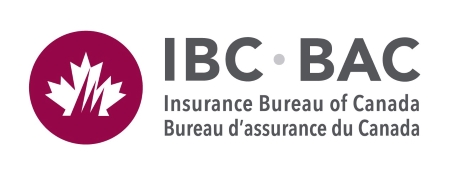TORONTO, Feb. 18, 2020 /CNW/ - The January 10 to 12 storm in southern Ontario and Quebec caused over $95 million in insured damage, $81.6 million in Ontario and $13.7 million in Quebec, according to Catastrophe Indices and Quantification Inc.* Most of the damage was to personal property.
In southern Ontario, overnight temperatures rose to record-breaking highs of between 10°C and 15°C prior to the storm. The rain began on January 10 and continued through to January 11, and on January 12 turned to snow. From Windsor to London, 60 to 70 mm of rain fell. In Toronto, 78 mm of rainfall was recorded. The Ottawa Airport reported 34 mm of rain, and 12 cm of snow and ice pellets.
On January 11, rain began in Montreal where the afternoon high reached 6.5°C, then came freezing rain as the cold front passed through. After midnight, the freezing rain became mixed with ice pellets, then there was an ice pellet-snow mix and later snow. Montreal received 40 mm of rain, and 13 cm of snow and ice pellets.
The combination of frozen ground, snowmelt and heavy rain led to widespread overland flooding, sewer backups and seepage. There were significant reports of flooded basements and multiple flooded roads, which resulted in closures across southern Ontario and Quebec. Wind damage was also a factor, especially in the Niagara Peninsula. Thousands of citizens were without power. The strong winds caused storm surges, which resulted in road closures in Fort Erie, Ontario.
"We continue to see the devastating consequences of severe weather events happening ever more frequently and with greater intensity," said Kim Donaldson, Vice-President, Ontario, Insurance Bureau of Canada (IBC). "In particular, storms with severe winds that cause flooding are becoming more common. While the insured damage from these storms is significant, the total economic cost to all stakeholders, government, and personal loss to homeowners is even greater."
Both taxpayers and insurers share the cost for severe weather damage. For every dollar paid in insurance claims for damaged homes and businesses, Canadian governments and taxpayers pay out much more to repair public infrastructure that the severe weather damages.
"It is important that property owners take precautions and protect their properties to minimize potential damage," continued Donaldson. "They should also understand their insurance policies and know whether they have overland flood coverage."
Visit IBC's website for information on how to prepare for a disaster and ways to prevent flood damage to your home.
* Catastrophe Indices and Quantification Inc. (CatIQ) estimated the amount of insured damage under licence to IBC. For more information on CatIQ, visit www.catiq.com.
About Insurance Bureau of Canada
Insurance Bureau of Canada (IBC) is the national industry association representing Canada's private home, auto and business insurers. Its member companies make up 90% of the property and casualty (P&C) insurance market in Canada. For more than 50 years, IBC has worked with governments across the country to help make affordable home, auto and business insurance available for all Canadians. IBC supports the vision of consumers and governments trusting, valuing and supporting the private P&C insurance industry. It champions key issues and helps educate consumers on how best to protect their homes, cars, businesses and properties.
P&C insurance touches the lives of nearly every Canadian and plays a critical role in keeping businesses safe and the Canadian economy strong. It employs more than 128,000 Canadians, pays over $9 billion in taxes and has a total premium base of $59.6 billion.
For media releases and more information, visit IBC's Media Centre at www.ibc.ca. Follow us on Twitter @IBC_Ontario or like us on Facebook. If you have a question about home, auto or business insurance, contact IBC's Consumer Information Centre at 1-844-2ask-IBC.
SOURCE Insurance Bureau of Canada

Media Contact: Vanessa Barrasa, Manager, Media Relations, 416-550-9062, [email protected]

Share this article